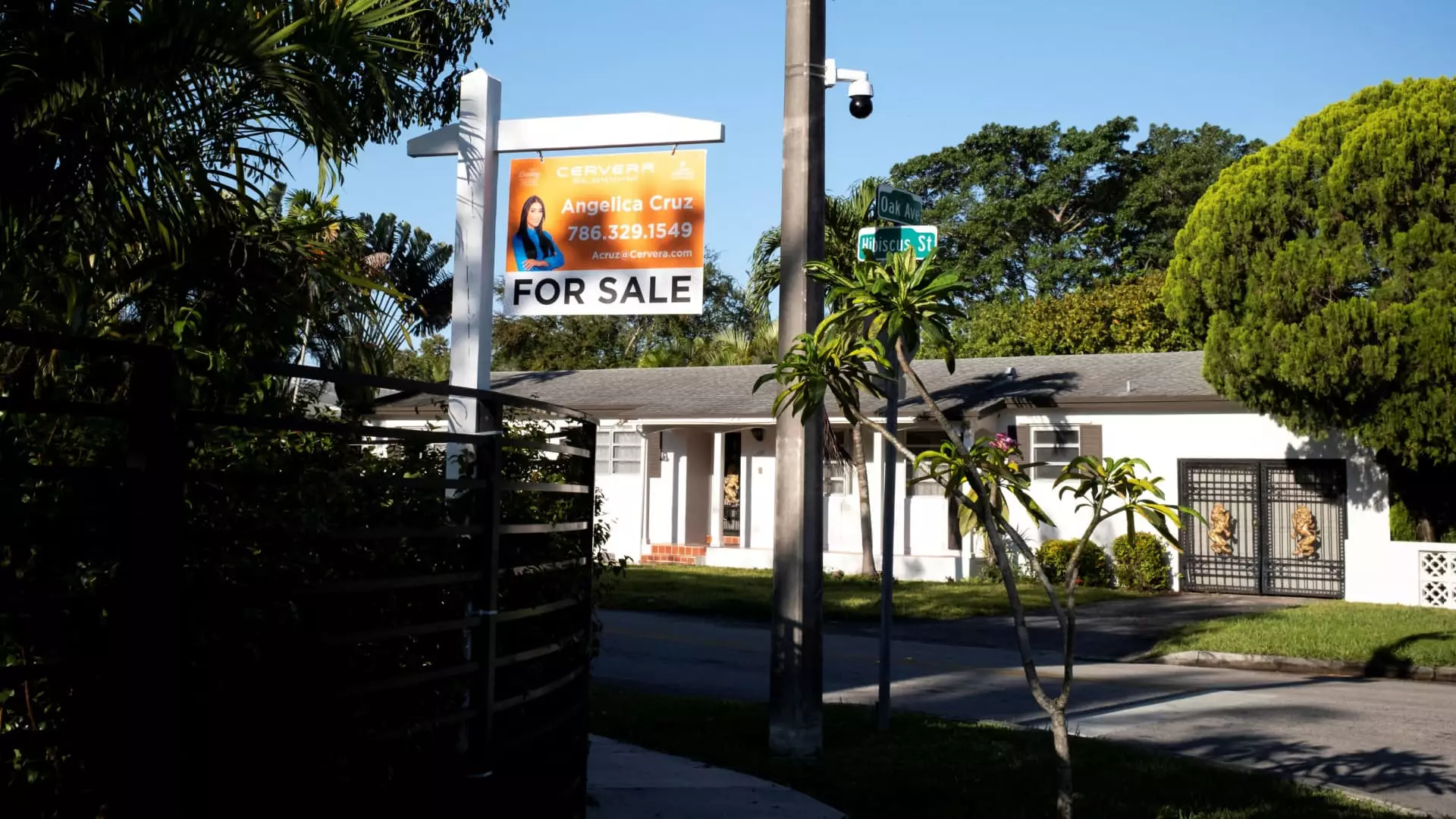The onset of the spring housing market in 2023 is marked by an unsettling trend: a notable decline in sales of previously owned homes. According to the National Association of Realtors, March experienced a startling 5.9% drop in sales from February, registering just 4.02 million units. This downturn is not just a seasonal bump; it represents the slowest March performance since the waning days of the Great Recession in 2009. The troubling statistics reveal not just a temporary decline but signify underlying economic concerns that threaten to derail the housing market for both new and existing homeowners.
The data indicates that housing sales fell across all regions, with the sharpest decline hitting the West — often the most expensive area in the nation — where sales plummeted by over 9%. This regional disparity suggests that even in areas traditionally viewed as economically robust, the current climate is causing unease among buyers. Meanwhile, the only glimmer of hope can be found in the Rocky Mountain states, which have fared reasonably well due to robust job growth. However, one cannot ignore the broader implications of a weakened housing sector as a precursor to economic stagnation.
The Mortgage Rate Crunch
A principal factor causing this sluggishness is the elevated mortgage rates, which have become a daunting barrier for many potential buyers. The average rate on a 30-year fixed mortgage remained above 7% for a significant stretch earlier this year, impacting contract signings substantially. Homeownership dreams are increasingly stifled, leaving first-time buyers, who comprise only about 32% of the market this March, feeling particularly disheartened. Historically, these individuals have made up closer to 40%, highlighting a stark disconnect in market accessibility.
The psychological toll of these high rates extends beyond simple numbers; it creates an aura of anxiety and apprehension. Prospective buyers are weighing the prospect of locking in high interest rates against the risk of continued economic recoil, resulting in indecision that clogs the market. The sense of perpetual uncertainty is palpable and is reflected not only in market dynamics but also in consumer psychology. As financial positions grow strained, it raises the question of consumer resilience and its longevity.
Inventory vs. Sales: An Unbalanced Equation
Interestingly, increased inventory levels are not translating into higher sales. As of March, 1.33 million housing units were on the market — a nearly 20% spike from the prior year. While this boost in inventory should ordinarily provide buyers with more options, it appears to have done little to induce actual transactions. The discrepancy between the supply of homes and demand is indicative of deeper economic issues.
Currently, at a sales pace suggesting around a 4-month supply, we find ourselves in a precarious situation. A balanced market is typically equated to a 6-month supply; thus, we are experiencing a mismatch that could potentially chill property values. The median home price still stands at an all-time high for March at $403,700, yet gains are diminishing. Only a 2.7% increase year-over-year indicates a cooling market after months of escalating prices.
Wealth in Housing: A Contrast to the Stock Market
Despite shifting dynamics, the residential real estate market still boasts substantial household wealth. The Federal Reserve estimates the total value of real estate assets at a staggering $52 trillion. Every slight uptick in home prices contributes significantly to household balance sheets, bolstering the idea that while prices may have plateaued, the overall value remains high. Yet, the paradox lies in the psychological and emotional aspects of this wealth: it’s increasingly difficult to enjoy this asset when the pathways to access it are choked by financial hurdles.
As we examine the environment surrounding current buyers — especially first-timers and young professionals — the landscape grows more tenuous. The feeling of being priced out becomes ingrained, leading to a mentality that may discourage investment and participation in the real estate market altogether.
Increasing Cancellations and Market Outlook
As noted by economic experts, the troubling numbers we see in March could be harbingers of worse news to come. Reports are surfacing of rising canceled contracts, a sign that buyers are no longer confident in their decisions. The continued volatility in the stock market further amplifies concerns; if you can’t trust the stability of your investments, how can you commit to a sizable financial venture like homeownership?
With shelter being a fundamental human need, the current stagnation in the housing market is more than an economic concern; it represents an erosion of dreams and aspirations. The icy grip of high mortgage rates is proving to be more than just a statistical hurdle; it’s a barrier that threatens to freeze the hopes of countless individuals looking for stability and ownership in these tumultuous times.

